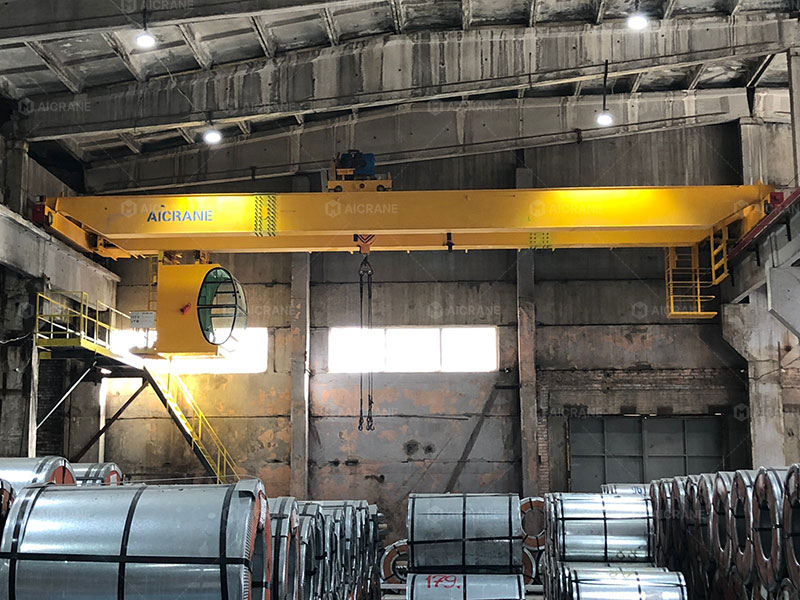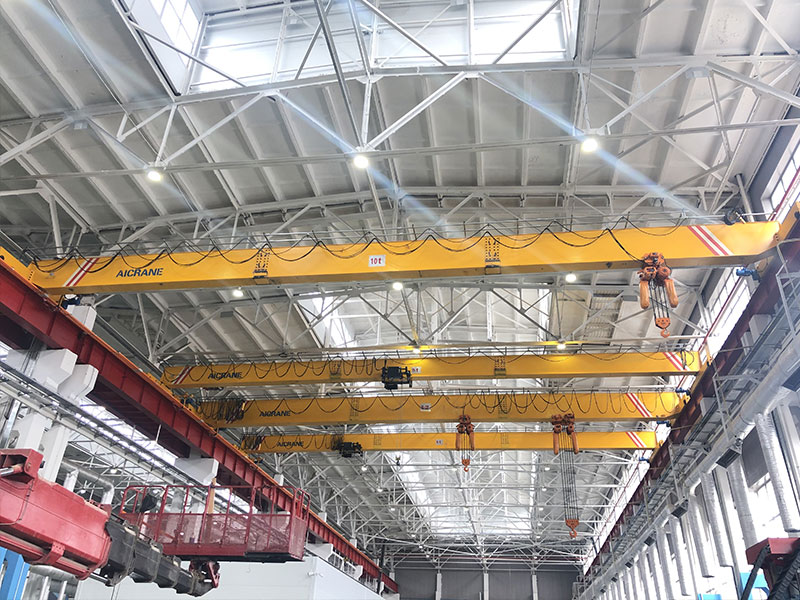Purchasing overhead cranes is a significant investment for many businesses, whether in manufacturing, warehousing, construction, or port operations. Overhead cranes are critical for material handling, ensuring efficient, safe, and precise movement of heavy loads. However, the cost of acquiring these cranes can be substantial, especially for larger capacities or highly customized designs. One effective strategy to optimize expenditure is placing bulk orders. By ordering multiple cranes at once, companies can often achieve substantial savings, reduce per-unit costs, and gain additional benefits. This article explores how bulk orders can reduce overhead crane prices and why businesses should consider this approach.

1. Understanding the Cost Structure of Overhead Cranes
To understand how bulk orders reduce costs, it is essential to know what contributes to an overhead crane price. Typically, the total cost of an overhead crane includes:
-
Material Costs: Steel for the main girder, end carriages, and supporting structure is one of the largest contributors to cost. High-quality steel, especially for heavy-duty cranes, can be expensive.
-
Hoist and Trolley: The lifting mechanism – wire rope hoists or chain hoists – varies in price depending on capacity, speed, and automation features.
-
Electrical Components: Motors, drives, control panels, and wiring add to the cost. Advanced control systems like remote or cabin controls are more expensive.
-
Design and Customization: Cranes designed for specific spans, lifting heights, or environmental conditions (like outdoor, corrosive, or explosion-proof environments) add to manufacturing costs.
-
Labor and Manufacturing: Skilled labor, assembly, and quality control are crucial for crane safety and reliability, forming part of the final price.
-
Shipping, Installation, and Testing: Transporting large overhead cranes and installing them on-site can significantly increase overall expenditure.
Each of these components has both fixed costs (that don’t change with quantity) and variable costs (that scale with the number of units). Bulk orders allow buyers to distribute fixed costs across multiple cranes, reducing the per-unit cost substantially.
2. Economies of Scale in Manufacturing
One of the main reasons bulk orders reduce prices is the economy of scale. Manufacturers can produce multiple cranes more efficiently than producing one at a time. This efficiency arises in several ways:
-
Material Procurement: Buying steel, motors, and electrical components in large quantities often qualifies for wholesale discounts. Suppliers frequently offer lower prices for bulk purchases, and these savings can be passed on to the buyer.
-
Manufacturing Efficiency: Setting up a production line for a single crane involves preparation, tooling, and labor allocation. Producing multiple cranes consecutively reduces setup time and labor hours per unit.
-
Reduced Waste: Bulk production allows manufacturers to optimize cutting, welding, and machining processes, minimizing material waste and improving overall resource utilization.
-
Standardization: If the bulk order consists of cranes with similar specifications, manufacturers can standardize parts and processes, lowering both labor and material costs.

3. Negotiation Power with Suppliers
Ordering overhead cranes in bulk strengthens a buyer’s position in price negotiations. Suppliers are often willing to offer significant discounts to secure large orders because it guarantees a substantial revenue stream and reduces marketing and sales efforts. Specific ways bulk orders improve negotiation power include:
-
Volume Discounts: Suppliers commonly provide price reductions based on order quantity. For example, ordering five cranes instead of one can reduce the per-unit cost by 10%–20% or more, depending on specifications.
-
Bundled Services: Suppliers may offer free or discounted installation, extended warranties, or faster delivery schedules for bulk purchases.
-
Flexible Payment Terms: Large orders might allow buyers to negotiate deferred payment schedules or financing options, improving cash flow management.
4. Reduced Engineering and Design Costs
Every overhead bridge crane for sale requires engineering and design work, including calculations for load capacity, structural strength, and compliance with safety standards. When ordering multiple cranes of similar design:
-
Shared Engineering Effort: The same structural and mechanical design can be applied across multiple cranes, reducing the per-unit cost of engineering services.
-
Faster Approval and Testing: Manufacturers can streamline quality checks, testing, and certification processes when cranes share a standardized design.
-
Cost Allocation: Fixed design costs are spread across multiple cranes, lowering the effective cost for each unit.
5. Logistics and Installation Savings
Bulk orders can also reduce costs related to shipping and installation:
-
Optimized Shipping: Transporting several cranes in one batch can reduce shipping costs compared to multiple single-unit shipments. Bulk orders may also allow for containerization or special freight rates.
-
Installation Efficiency: Installing multiple cranes at a facility can be planned sequentially, reducing downtime, labor hours, and mobilization costs.
-
Training and Maintenance: If cranes are identical, operator training and maintenance procedures can be standardized, reducing ongoing operational costs.
6. Long-Term Financial Benefits
Beyond immediate per-unit savings, bulk orders can deliver long-term financial advantages:
-
Lower Total Cost of Ownership (TCO): Standardized cranes reduce spare parts inventory, simplify maintenance, and minimize unexpected downtime, all of which lower TCO.
-
Operational Flexibility: Acquiring multiple cranes at once ensures sufficient material-handling capacity for expansion or multiple production lines without repeated procurement cycles.
-
Predictable Budgeting: Bulk orders allow companies to lock in prices, protecting against future market fluctuations in steel, electronics, or shipping costs.
7. Case Example
Consider a mid-sized manufacturing facility that needs five double girder 20 ton overhead cranes. Individually, each crane might cost $80,000, totaling $400,000. By placing a bulk order:
-
The supplier offers a 15% discount for all five units, reducing the total cost to $340,000.
-
Standardized cranes reduce installation time by 20%, saving $10,000 in labor.
-
Bulk procurement of hoists and electrical components cuts material costs by another $5,000.
In this scenario, the facility saves $65,000 compared to ordering cranes individually, while also gaining efficiency and long-term operational benefits.
8. Considerations When Placing Bulk Orders
While bulk orders offer significant advantages, companies must plan carefully:
-
Storage and Space: Ensure adequate storage space for multiple cranes if delivery occurs before installation.
-
Demand Forecasting: Only order the quantity that aligns with projected operational needs to avoid over-purchasing.
-
Customization Needs: If some cranes require unique specifications, balance standardization with customization to maximize savings.
-
Supplier Reliability: Ensure the manufacturer can handle large-scale orders while maintaining quality standards.
9. Conclusion
Bulk ordering overhead cranes is a highly effective strategy for reducing per-unit costs while gaining operational efficiencies. By leveraging economies of scale, negotiation power, shared engineering, and logistical efficiencies, businesses can achieve substantial savings and improve their return on investment. Beyond price reductions, bulk orders also enhance long-term operational flexibility, simplify maintenance, and provide predictable budgeting. For companies planning expansion or upgrading their material-handling capabilities, considering bulk purchases of overhead cranes is a smart financial and operational decision.
In an increasingly competitive industrial environment, strategic procurement like bulk ordering can be the difference between high operational costs and optimized, cost-effective operations.
